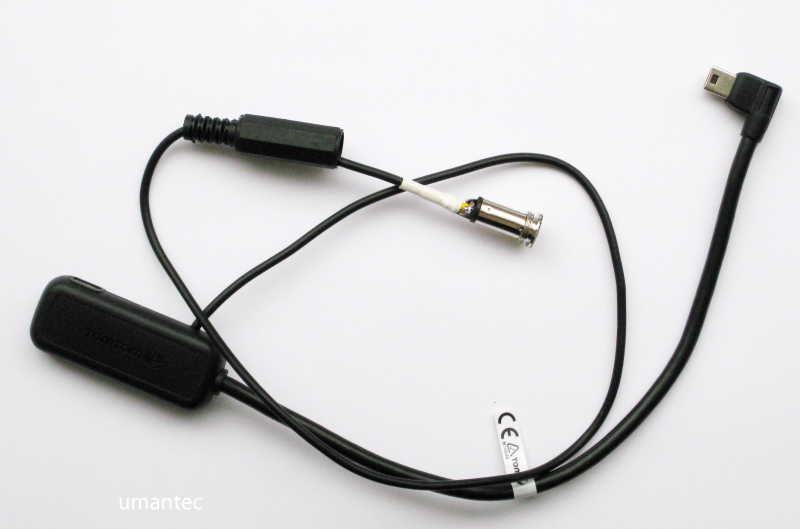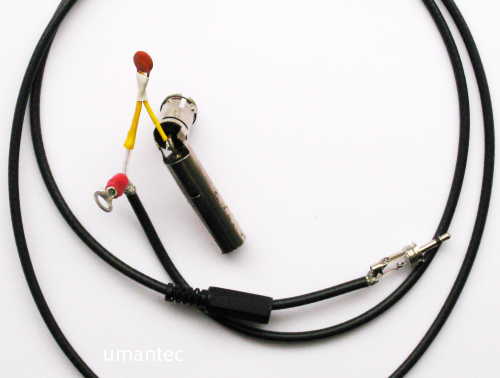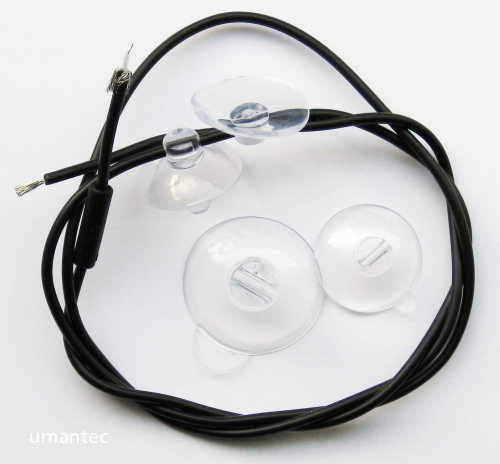
TomTom navigators do not have an RDS-TMC receiver on board. Why they do not is a mystery, other brands do. I consider traffic information essential for a car navigator, so I bought the TomTom TMC receiver. They come in two varieties, one with a mini-jack, and another with an USB connector. I opted for the second type: it is more universal.
The sensitivity of the RDS receiver far from optimal, so a correct placement of the aerial is crucial. For this the receiver is fitted with a series of suction cups. These cups look silly on your front window, obscure the view, and the cups do not suck.
In addition, I live in a sort of "Bermuda-triangle" for radio signals: My cellular has poor reception, and some major radio stations drop off the radio in certain situations. Therefore I was not surprised that I could not get my vital TMC data early the morning.
Dropping the aerial next to the power cord is not an option with the TomTom receiver. I had to come up with another solution: the car's radio aerial on the roof.
You can use a splitter, but I simply extended the aerial cable from the radio with a thin coaxial cable to connect it to the TomTom receiver. Unfortunately, the receiver has no input, so I had to make one myself. The receiver is a pricey item; after some deliberation I decided to modify the TomTom receiver's aerial in order to accept the cable from the roof aerial.
The TomTom aerial consists of two parts. One part runs from the receiver to the first bulge, about 50cm. This first part is coaxial cable, and as such not an aerial. From the first bulge to second bulge, the end, is the aerial, 78cm long. So what I had to do is cut the coaxial cable from the receiver near the first bulge and give it a connector. Then I could connect it to the external aerial on the roof. In case you wonder: The centre wire is the signal wire, the woven casing the shielding.
I strongly advice to make a galvanic separation between the TomTom RDS-TMC receiver and the car aerial/radio. The shielding should be disconnected at one point (e.g. inside the receiver mini-jack). A 10nF ceramic capacitor in the signal line should do it for the antenna signal.
The new system works fine. I have reception everywhere, there is no silly aerial on the front window, and I can easily hide the aerial cable. For the connectors I used a 2.5mm mini-jack, cheap and reliable. The coax has a diameter of 3mm.
Making the system requires some experience with a soldering iron, and you must know how to cut and strip thin cable. For the rest it is simple and straight forward. If I ever want to use the TomTom receiver in a friend's car, I can simply make an aerial wire with a mini jack at the end. A 80cm wire should do the job. If I only knew where to find reliable suckers.
A pdf-version of this page: How to connect an external antenna to your TomTom TMC Receiver.
After my modification I found
this document describing a similar modification.
Local copy (original is gone).
P.S. This setup wrecks your AM reception (LW/MW/SW). I do not yet know why.
Photo of the modified TomTom receiver. The connector is left open
for the photo. Notice the isolation between the cable shielding and the
mini-jack using shrink sleeve.

The newly made aerial cable. Notice the 10nF ceramic capacitor in line
with the signal wire, isolated using shrink sleeve.

The original cut-off aerial.

Disclaimer: I take no responsibility for anything you do with your TomTom and the effects of any modifications. If it does not work, you are on your own.
email: f_vanwestrenen @ umantec . nl